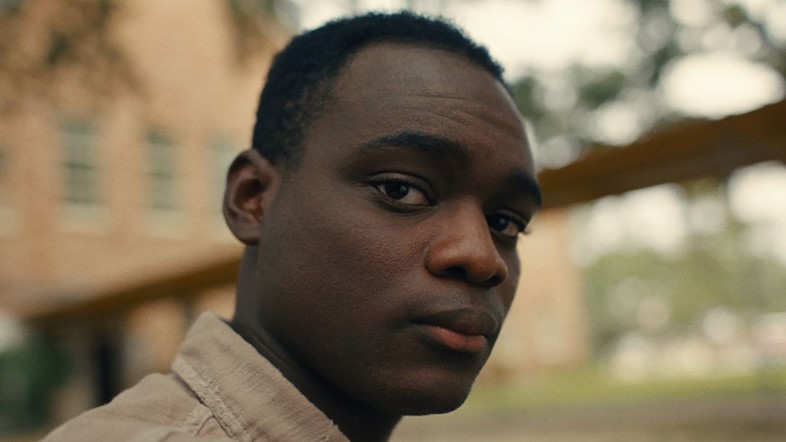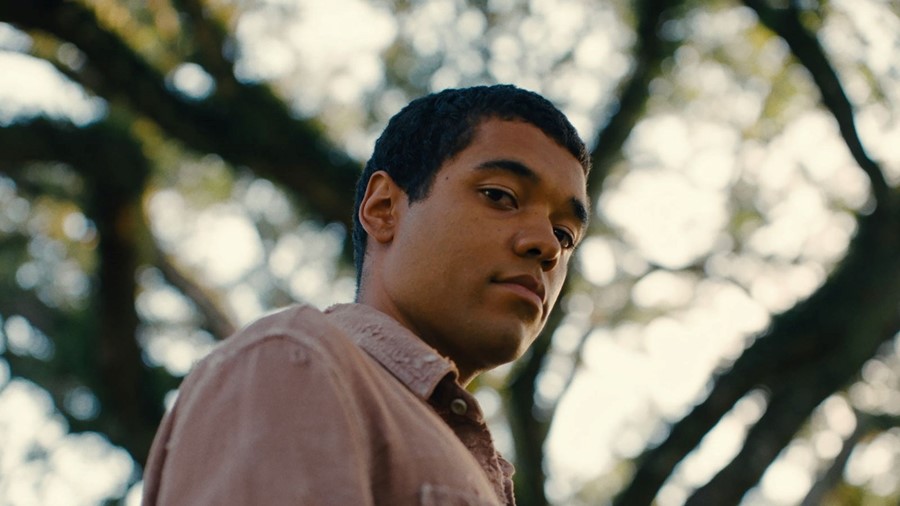A triumph that goes far beyond a conventional tale of institutional abuse, RaMell Ross’s Nickel Boys reinvents the camera as “an extension of consciousness”
In American filmmaker and photographer RaMell Ross's new film Nickel Boys – adapted from Colson Whitehead’s Pulitzer Prize-winning novel of the same name – we are faced with the buried memories of a frighteningly recent America. Elwood (Ethan Herisse), a Black teenager in the 1960s, is sent to the hellish reformatory school ‘Nickel Academy’ (based on Florida’s real-life ‘Dozier School for Boys’) for the crime of unwittingly accepting a lift in a stolen car. The boys at Nickel receive regular beatings; many even die and are buried on the grounds. Eventually, we are shown archival images of what has been dug up at Dozier years later – marbles, belt buckles and human bones.
Ross was a celebrated photographer long before he ever made a film. Nickel Boys is the 42-year-old’s second feature; his first, the mesmerising documentary Hale County, This Morning, This Evening was the thunderbolt of originality that first brought him widespread acclaim in 2019. In person, Ross is open and funny, speaking with the relaxed eloquence of an artist who has something to say. Since its release this month, Nickel Boys has been lavished with praise, and deservedly so; it’s a triumph that goes far beyond a conventional tale of institutional abuse. “People feel so sure about the way in which history and oppression should be explored,” he says. In Nickel Boys, however, he offers us an alternative way of looking at history.
For a start, the entire film is shot from the point of view of its protagonists – Elwood and, later, his friend at Nickel, Turner (Brandon Wilson), giving the film a dreamlike subjectivity. The camera, Ross says, becomes “an extension of consciousness”. We see only through the eyes of these boys, and most of the time we can’t even see them. This is utterly at odds with how stories are usually told in the movies. “In cinema, you learn everything through watching people’s behaviour and actions while they don’t know you’re watching,” says Ross. “That’s weird, you know! I’m interested in a polytheistic lens. The otherness that the camera allows would not exist in other cultures – Buddhism, Hinduism – because everything is God, there’s no separation.” In Nickel Boys, the viewer’s eye is the same as the character’s – it’s as bold a choice as you will ever see on film.
Ross calls his POV style “sentient perspective”. He is full of these aphorisms – “make the camera an organ” and “uncomplete the work”. My favourite is “the indecisive moment”, which is a response to the French street photographer Henri Cartier-Bresson, who spoke of the “decisive moment” at which an image must be captured. Ross, on the other hand, refuses to capture one definitive truth, an idea which has long been at the heart of his work. When he made Hale County, he shot over 1,300 hours of footage.
This new way of seeing is partly a response to Ross’s experience of race in America. Though he now lives in Rhode Island, he grew up in the South. “As a quote-unquote ‘Black child’, the way in which I’ve had to come to understand race is the way in which I know [Elwood and Turner] would’ve had to come to understand race. Sometimes I see people looking at me which I take as racial, sometimes I don’t. Those are the core elements of looking that I tried to give to them.”

The first time we see Elwood, as a boy reflected in a shop window, he is framed by TV images of Martin Luther King Jr flickering into life behind the glass. So, the instant he realises that he has an identity, it is racialised with the flick of a switch. On those TV screens, “Elwood has seen a version of Black life that he’s only experienced internally, never in the world,” says Ross. “It’s a political awakening almost by opposition, where he’s like, oh ... why have I never seen these images out in the world?”
That absence aches beneath the film’s surface. Ross is aware of how rarely we are offered complex, sensitive, even mundane, visions of Black life onscreen, and offers an alternative. Nickel Boys is an ambitious work. He has to fill in the gaps of a partially unrecoverable history with his own poetic imagination. One could easily worry about the weight of that responsibility, but he shrugs it off. “We wanted this film to be deeply open-ended,” he says. “If someone can come to conclusions themself then it’s more powerful.”
When Elwood receives a beating, we see behind his shoulder for the very first time. He observes himself in out-of-body panic, but Ross doesn’t let us watch the violence. With each lashing sound, we cut instead to black-and-white stills of the real-life Dozier boys, jerking us from narrative cinema into documentary. History is brought to life half-remembered which affects a kind of cinematic haunting. “The camera gets displaced – it’s trauma,” Ross explains.

Ross has always seen people as “holy mysteries” whose memories are full of riches and empty space. That feeling gave birth to the POV idea which allowed him to properly dramatise these ghosts whose generational traumas have concatenated into America’s present subconscious. “There is a relationship between time, culture and memory,” he says. “Nothing is erased, it’s only absorbed. We’re allowed to understand that the 1960s and now are genuinely aligned.” Towards the end of the film, we meet one of the boys, now a man, who has survived Nickel. He is asked what he can recall of that hell. “You know what I do remember?” he says. “Ghosts.”
Nickel Boys is out in UK cinemas now.
